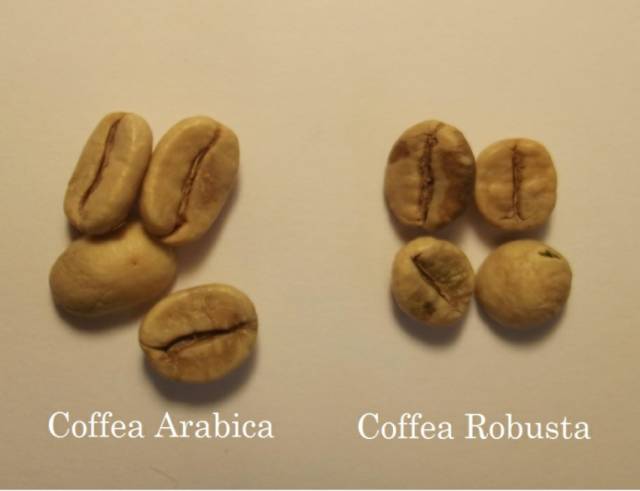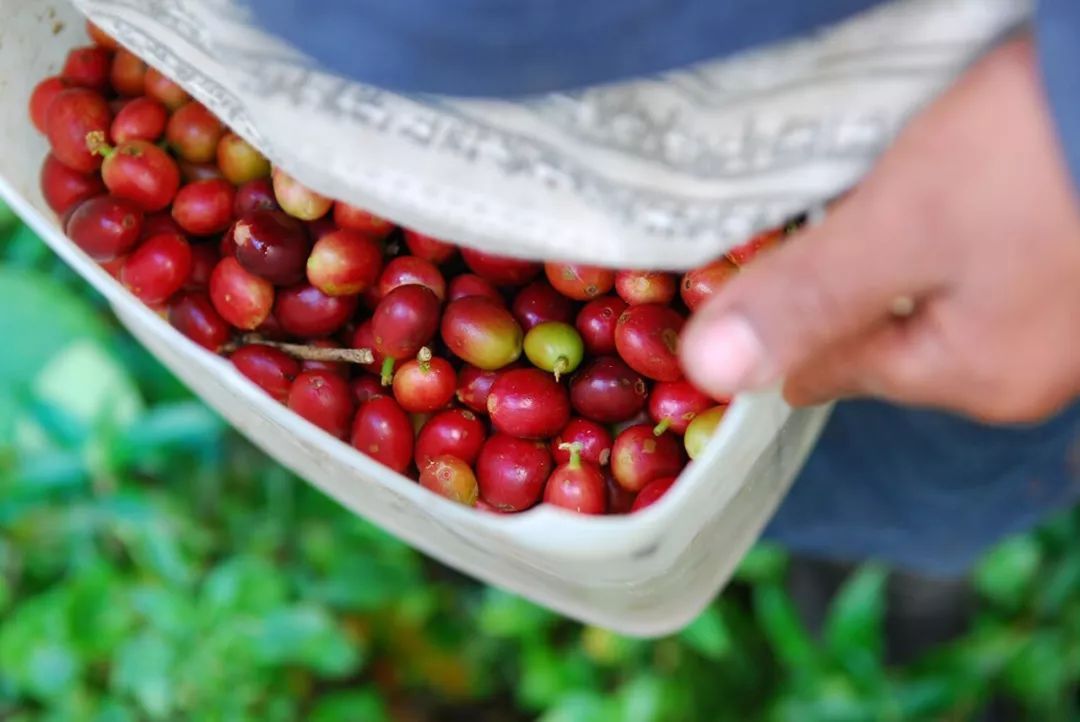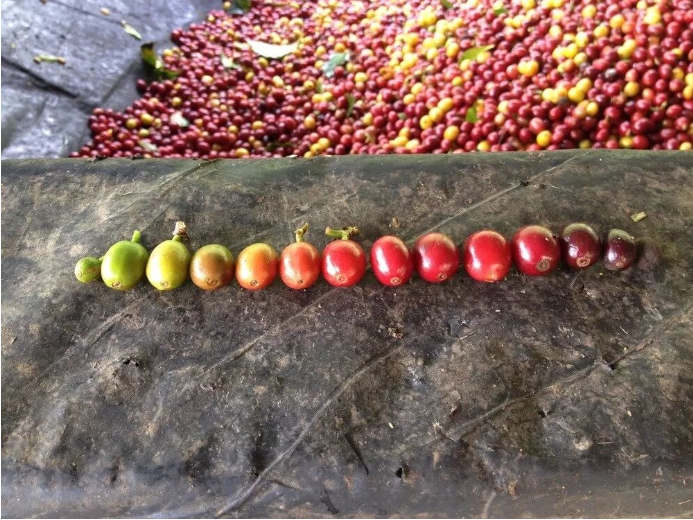What's the difference between Arabica coffee beans and iron pickup coffee beans? What are iron pickup coffee beans?
First of all, let's talk about what Arabica is. At present, the coffee beans we drink can be divided into two kinds: Arabica coffee beans and Robusta coffee beans. Arabica coffee beans have a low caffeine content, between 0.9% and 1.2%. The content of fat and sugar is quite rich, the smell is soft, not irritating, the taste is fresh and sweet, sometimes with some refreshing and pleasant sour taste, full flavor It is loved by most coffee lovers. However, Arabica coffee has weak insect resistance, high altitude and slow fruit. therefore, Arabica coffee is mostly used to make boutique coffee, and the price is more expensive.

In terms of taste, the United States and Japan drink light coffee made from Arabica more often, while Europe prefers Italian concentrate made from a mixture of Arabica and Robusta.
Arabica is a representative variety of Ethiopia of origin, and it is also produced in South Africa, Africa, Asia and other countries, accounting for 70% to 75% of the world's coffee production. Arabica has weak resistance to diseases and insect pests, so the highland area is more suitable for cultivation, especially the quality of Arabica coffee beans produced in the highland above 1500 meters is the best.
What are the iron pickup coffee beans? Here is a detailed introduction, iron pickup is one of the most important varieties of Arabica coffee. First of all, it itself is varied. From the Blue Mountains of Jamaica to Arabigo in Central America, you will find varieties of tin cards all over the world. Secondly, it is the male parent of some popular varieties, such as Mundo Novo and Pacamara. "it has a lot of names, including the most famous Blue Mountain in Jamaica," Hannah Newschwander, communications director of the US-based World Coffee Research (World Coffee Research), told me. Others include: Creole, Indio (India), Arabigo (Arabica), Hidalgo and Sumatra. " The iron pickup can be identified by its tall size, which is about 5 meters / 16.5 feet high. Its trunk is very thin, the branches are very thin, and are separated by height. The iron pickup is also characterized by its broad leaves, bronze tips and the slender shape of cherries. It can have a sweet clean cup. Heleanna Georgalis, co-founder of Ethiopian Moplaco, told me that the outline of the cup is "one of elegance, flowers and fruit, as well as complex flavors".

The History of Iron pickup Coffee
The history of iron pickup can be traced back to southwestern Ethiopia, just like other Arabica coffee. Arabica coffee was brought to Yemen between the 15th and 16th centuries and to India in 1700. The seeds were sent to the coast of Malabar in India and Java in Indonesia, now known as the Ironka variety.
Before Yemen, bourbon used to be a typical iron pickup, instead of sending seeds further east, it was introduced to the island of Bourbon (now Reunion) off the coast of Madagascar. Like a tin pickup, bourbon is part of the family tree of coffee varieties. It is still grown worldwide and is the mother of popular coffee varieties such as Mundo Novo (a natural variety of iron pickup and Bourbon) and a natural variation of Caturra,Bourbon.
In 1706, a typical plant was sent from Java to a botanical garden in Amsterdam, the Netherlands. The factory is then shared with France. In 1722, both France and the Netherlands brought iron pickup plants to the South American colony, Dutch Guiana (now Suriname), and then to Cayenne (French Guiana). In 1727, the iron pickup factory arrived in northern Brazil.
The tin card reached southern Brazil between 1760 and 1770. Over the next few centuries, different mutations in iron pickups were discovered. These include the Maragogipe variety, which is a natural mutation of the tin truck and is used to develop popular Pacamara varieties. Mundo Novo varieties are also discovered and developed in Brazil. By the late 1800s, iron pickups could be found in Central and South America, as well as in Jamaica, Cuba and Puerto Rico in the Caribbean. Until around the 1940s, most coffee farms in Central America grew iron pickups. Throughout its history, iron pickups have spread all over the world, starting from Africa, then to Asia, then to America. As a result, different varieties and mutations of iron pickups are usually planted around the world.
The world-famous coffee beans Blue Mountain Coffee is the use of tin card varieties of coffee beans.
Important Notice :
前街咖啡 FrontStreet Coffee has moved to new addredd:
FrontStreet Coffee Address: 315,Donghua East Road,GuangZhou
Tel:020 38364473
- Prev

Free barista training and teaching, how to inject water and circle to make high-quality hand-made coffee? Teaching the skills of making coffee by hand.
Water injection in the form of circle in hand-brewed coffee has basically become the most extensive form of brewing, and the form of circle is also very diverse, some like to circle in small circles, some like to make large circles, some like to throw water quickly, and some like elegant and uniform circles. and, of course, irregular circles. There are so many forms of water injection in circles.
- Next

What is the world's top ten coffee beans Ethiopian boutique coffee red cherry program? What is the coffee bean of red cherry project?
Red, ripe coffee cherries tend to be more representative of the regional aroma of coffee growing. In order to showcase the regional aroma of Ethiopian coffee in the coffee mecca, in 2007 the Dutch company Trabocca and local coffee farmers launched the "OPERATIONCHERRYREDPRO"
Related
- Beginners will see the "Coffee pull flower" guide!
- What is the difference between ice blog purified milk and ordinary milk coffee?
- Why is the Philippines the largest producer of crops in Liberia?
- For coffee extraction, should the fine powder be retained?
- How does extracted espresso fill pressed powder? How much strength does it take to press the powder?
- How to make jasmine cold extract coffee? Is the jasmine + latte good?
- Will this little toy really make the coffee taste better? How does Lily Drip affect coffee extraction?
- Will the action of slapping the filter cup also affect coffee extraction?
- What's the difference between powder-to-water ratio and powder-to-liquid ratio?
- What is the Ethiopian local species? What does it have to do with Heirloom native species?

